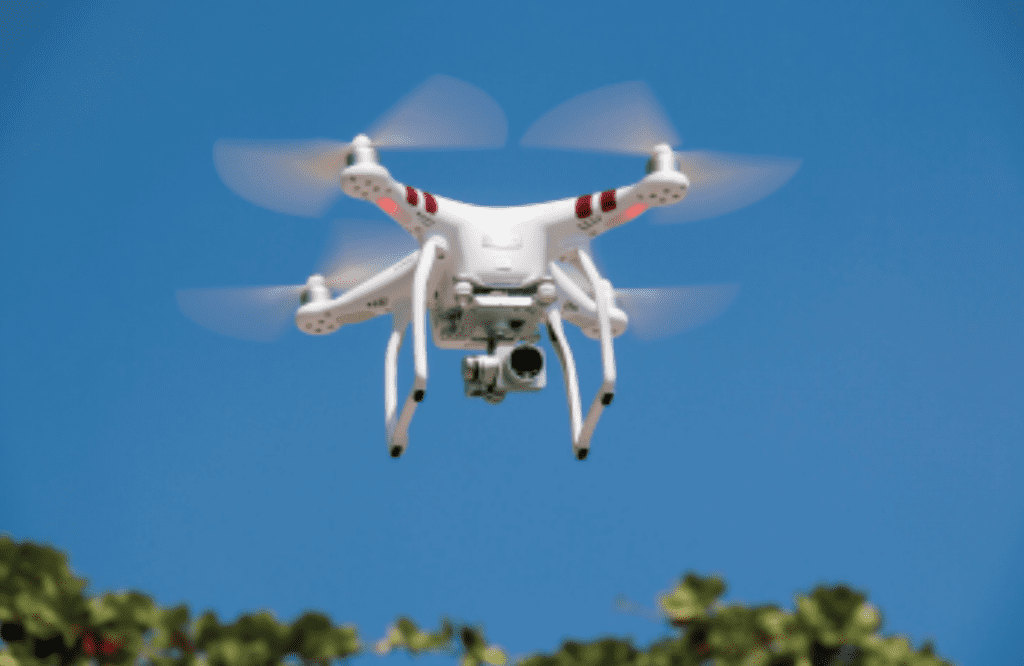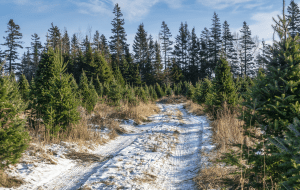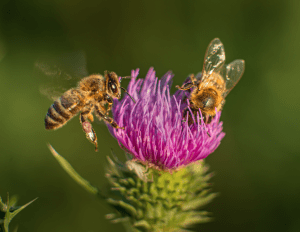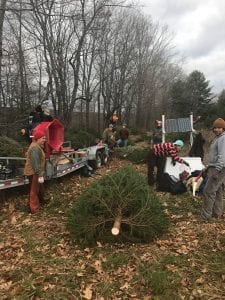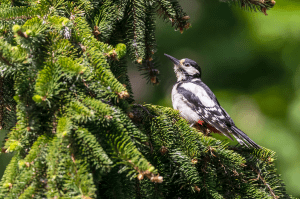Adapted from an article by author Dan Staley, Principal of Analemma Resources, LLC in Aurora, Colorado, a Technology-Forward Green Infrastructure Consultancy
Are you thinking about incorporating this modern technology into your tree business?
The best way to get started and make decisions is to read online consumer reviews and reports. Join a local hobby group to watch drones in operation. Talk to the pilots too. Rent a drone. Buy a drone. While you are at it make sure to talk to tree growers who are successfully using drones in their businesses.
An important thing to keep in mind while researching drones for your tree operation is the speed at which technological changes are taking place.
The focus of this article is multi-rotor UAVs, as this aircraft type, at the time of original publication, is the most likely to be chosen by public and private sector tree care operations.
Affordability
Advances in technology are driving a drop in price with each new model released by manufacturers. For example, the most popular manufacturer, DJI, recently introduced a new version of the world’s best-selling UAV, the Phantom 4. Not only can the new model fly longer, but it includes “obstacle avoidance” technology that can prevent collisions with objects such as trees, all for less cost than previous models. And DJI dropped prices on other popular models as well. Competing manufacturers such as Yuneec and 3D Robotics recently improved their most popular models and dropped their prices too. They are developing features unique to their brands to build strength in the marketplace. Any of these manufacturers make aircraft that are perfectly fine for tree care and management.
Newer, cheaper aircraft models hitting the market every few months brings up the question of obsolescence. It’s a fair point. However, your aircraft will be serviceable for your needs for several years at least – if you fly safely.
And consider the fact that plenty of perfectly usable “old” aircraft are available as well, and these less expensive aircraft can allow you to dip your toe into drone arboriculture, train staff, practice or keep one as a spare.
Optics
Another key consideration is the rapid change in optics. Video cameras with good zoom will be essential. Get the best zoom available to be able to identify hail damage, D-shaped exit holes, frass, decay, and fungi. Other optics such as infrared and multispectral devices are great if you have contracts for golf courses or large, maintained properties, but may be too expensive right now unless you already have clients willing to pay for these data. In a few years, however, infrared detectors will be fairly commonplace and will be standard tools for water-use management in landscapes.

Take a look at communication, avionics, and telemetry technology.
They are all miniaturizing rapidly and being combined into a single unit. Very soon all new UAVs will have transponders that communicate with other aircraft to help avoid collisions. Some new models already have “geo-fencing,” electronics. They restrict flight to a designated height and area and prevent flight beyond those boundaries. New geo-positioning systems continue to enter the market – bundled with other avionics. They aid in flight control, safety, and flight path programming.
Costs and benefits
The moment you see your first live video feed from a drone, you will begin to imagine how it can be used in your operation – crew safety, estimating, inventory, visuals for a potential client for estimates and sales. But is it worth the cost to purchase? That depends on your particular operation. The most important cost is the equipment. Not just the aircraft itself, but spare propellers, extra batteries, radio, telemetry, and a carrying case.

You may want a new, larger tablet for screen resolution and to do work in the truck.
Let’s assume a complete system will be $2,500 for new, quality equipment; somewhat less for less popular but still good brand names; and maybe a third less for used equipment. Then you’ll likely want insurance. You’ll want a spare aircraft to train staff and make mistakes with – because touching a rotor to a branch 40 feet up is a catastrophic crash – so now the cost can be up to $1,000 more for a good spare and parts. Your staff costs will include some set number of hours for their learning time. That’s your tangible cost. An intangible cost is unique to you. It may include slowdowns caused by staff training with a new system. Your benefits are unique to you as well, in terms of tangibles, intangibles and how you can translate this new tool into positives in both monetized and non-monetized benefits.
Tangible benefits include:
- Your assessments and inspections will be faster and cheaper, as drone inspections are far less costly than your bucket truck.
- Estimates will be more accurate, as a UAV will do your measurements and also make for fewer surprises with a new view from above.
- Your staff will be safer because their procedures can be easily checked, and you can fly in advance to look for decay, hornets, a clear path for a throw line, etc.
- On sales calls, your prospective clients will be involved in the sale by seeing their properties and trees from a new perspective in real-time. Your staff can email video or stills during the visit to help close the sale – and for word of mouth afterward. Your drone staff should see increases in their sales if they embrace these ideas.
- Inventories will improve with a UAV.
And-
- Your social media will be rich with bird’s-eye views of your top-notch and safe work, holiday lights that you installed, and street views of your clean, safe operation right next to the “Ask for a Quote” button.
Hiring a pilot
Maybe you don’t have staff who are confident about flying expensive equipment near trees. Or perhaps you don’t have the time to spend making a well-thought-out decision. And you are also unsure that the regulatory environment is stable enough to commit capital right now. Fair points. Another option is to hire a pilot instead.
At the time of this writing, there are several thousand Section 333 pilots in the U.S. who fly commercial missions. Section 333 pilots are dedicated, skilled pilots who took the extra time to endure an onerous licensing process to get started in the business, and are ready to go today.
As soon as commercial flight rules are approved, drone inspection businesses will start taking off. Prices will become competitive and third-party providers will be a standard option. It is very likely that businesses will exist primarily to serve the tree care industry both on the public and the private side. Especially when spray operations in urban forests are viable, as spraying requires much more flying skill.
Knowing that pilots are out there now and that it is likely future businesses will be dedicated to tree-care inspection, it’s a viable option to consider hiring a third party to assist with drone flights. You won’t have to purchase equipment and insurance and train staff. You will, however, have to build and manage new relationships with several pilots in order to ensure someone is available at a particular time for a job.
Other things to consider:
- What sort of rapport will you have with a pilot around a client, and will it improve the meeting?
- What perspectives can pilots offer that you might miss?
- Will their fees be worth it compared to purchasing equipment and performing staff training, and for how long?
- Pilots are highly trained professionals and very aware of safety and efficiency. They may add a new perspective to your operation.
Laws, licensing, regulation – what’s going on?
There are always new developments to consider in the drone regulatory landscape. For the most up-to-date information, refer to Transportation Canada – Drone Safety https://www.tc.gc.ca/en/ services/aviation/drone-safety/flying drone-safely-legally.html.
Finally…
Regardless of whether you choose to begin the process to purchase your own equipment, hire a third-party pilot, or wait until the legal dust settles, UAVs will soon be common in the tree care industry. UAVs are already an important new tool for inspection, assessments, inventory estimates, and monitoring and will definitely change the way arboriculture is performed.
This blog was adapted from an article published in the CTCNS Journal by author Dan Staley, Principal of Analemma Resources, LLC in Aurora, Colorado, a Technology-Forward Green Infrastructure Consultancy.

